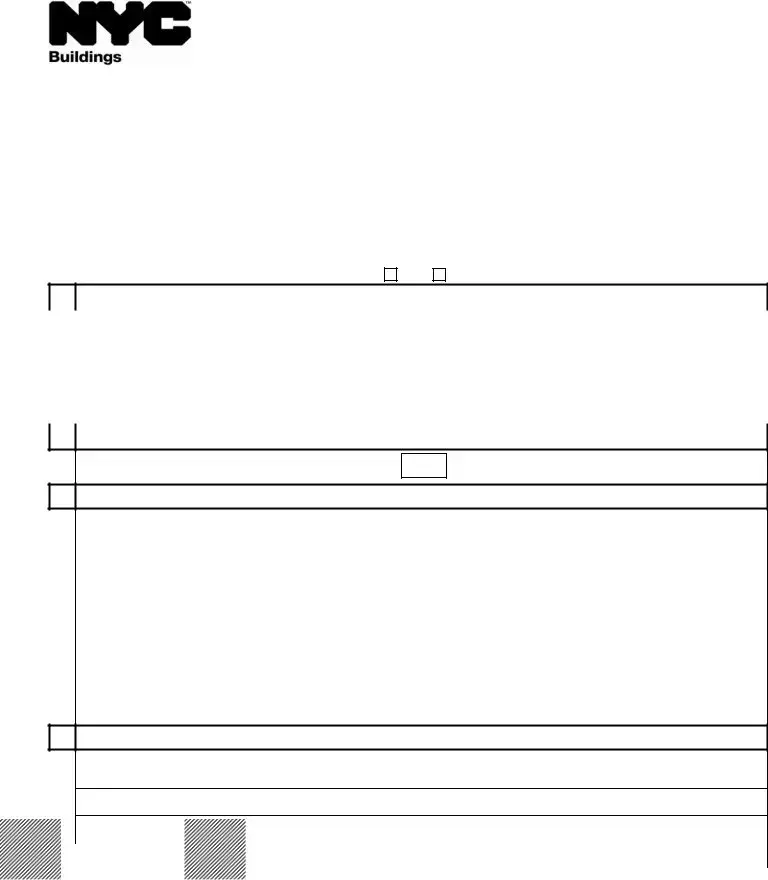Similar to the NYC LL4A form is the Local Law 11/98 Façade Inspection Safety Program (FISP) Report Form. Both are specific to New York City regulations and require property owners to submit detailed reports regarding the safety features of their buildings – the LL4A focuses on sprinkler systems, while the FISP addresses the integrity of building façades. Each form necessitates the input of professional information and an assessment of the building's compliance with local laws, aiming to enhance the safety of the urban environment.
The Property Registration Statement is another document that shares similarities with the NYC LL4A form. Both forms necessitate owners to provide comprehensive property information, including owner and building details, to a city department for regulatory purposes. While the Property Registration Statement aims at identifying responsible parties for essential communications and enforcement actions, the LL4A form focuses on reporting the status of a building's sprinkler system compliance.
The Building Permit Application, used across various municipalities, also shares common features with the LL4A form. Both documents require detailed property and owner information, and they must be submitted for review before certain types of building work can proceed. The key difference lies in their purposes: while a Building Permit Application seeks approval for new construction or renovations, the LL4A form reports on existing safety features (sprinkler systems) within a building.
Annual Boiler Inspection Reports, similar to the LL4A, are mandatory submissions to local authorities that report on the condition and safety of a specific building system. Both forms serve as compliance checks to ensure public safety by maintaining regulated systems within buildings – boilers in one case, and sprinkler systems in the other. They require detailed submissions from licensed professionals affirming the operational status of these systems.
The Fire Safety Plan and Notices form, required in various jurisdictions, is akin to the LL4A form in its purpose to enhance building safety. While the Fire Safety Plan focuses on outlining procedures and equipment placements for fire emergencies, the LL4A form specifically addresses the building's sprinkler system status. Both forms play critical roles in emergency preparedness and response strategies within buildings.
The Certificate of Occupancy Application is similar to the LL4A form in that it provides municipal authorities with detailed information about a building’s use, occupancy, and compliance with local codes, including safety systems. However, the Certificate of Occupancy focuses more broadly on ensuring a building's overall readiness for its intended purpose, whereas the LL4A form is specifically concerned with sprinkler system compliance.
The Electrical Inspection Certificate is another document that, like the LL4A, ensures a critical system within a building meets local codes and safety standards. Where the LL4A focuses on sprinkler systems, the Electrical Inspection Certificate deals with the building's electrical systems, requiring detailed inspections and reports to certify their safety and compliance, highlighting a commitment to maintaining safe building environments.
Environmental Assessment Forms, used in the planning stages of various projects, share their aim of safeguarding public interests with the LL4A form. While the Environmental Assessment looks at a broad range of potential environmental impacts a new project may have, the LL4A focuses on a specific aspect of building safety – the sprinkler system. Both forms are integral to proactive measures in public safety and environmental protection.
The Hazardous Materials Management Plan, required for buildings handling dangerous substances, parallels the LL4A form in its role of ensuring safety through regulation and reporting. While focusing on the management of hazardous materials, this plan, akin to the LL4A's focus on sprinkler systems, outlines safety protocols and systems in place to prevent and respond to emergencies, underscoring the importance of preparedness and prevention.
Lastly, the Lead Paint Notice, similar to the LL4A form, is required for residential properties to disclose potential hazards. While the Lead Paint Notice is aimed at informing tenants about the presence of lead-based paint, the LL4a form is concerned with the reporting of a building's compliance with sprinkler system requirements. Both documents are vital in ensuring the health and safety of occupants by addressing specific safety concerns within buildings.

